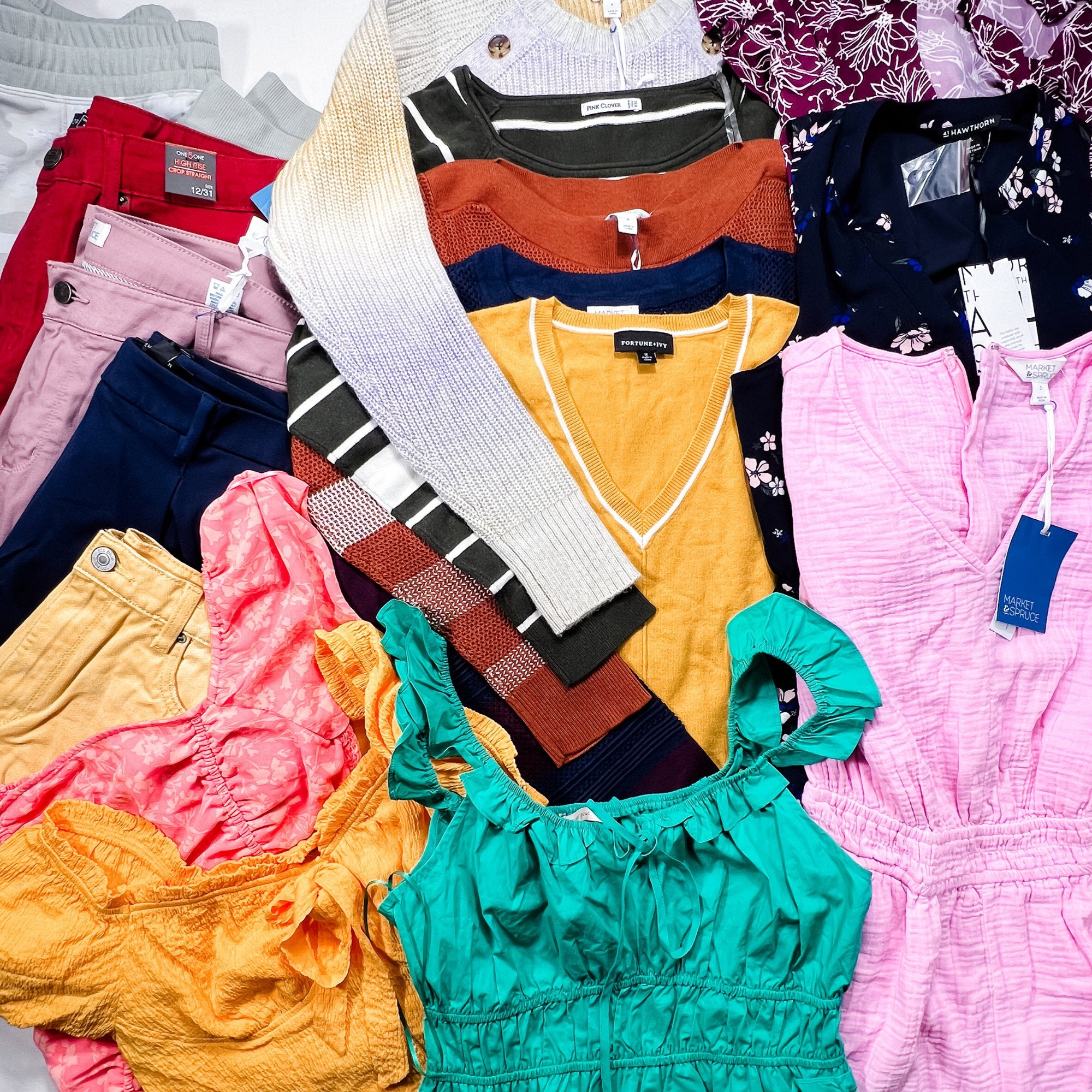Branded Clothing and the Rise of Recycled Fabric Use in Fashion
Branded Clothing and the Rise of Recycled Fabric Use in Fashion
Blog Article
Comprehending Apparel: The Significance of Fabric Selections in Your Wardrobe
The option of material in garments plays an essential duty in both aesthetics and capability. Various materials use differing levels of breathability, convenience, and resilience, straight affecting the wearer's experience. Understanding these subtleties can boost one's wardrobe significantly. Yet, many ignore exactly how these selections can impact not just individual design, however likewise sustainability. What material choices could redefine your closet and straighten it with both design and obligation?
The Function of Material in Fashion and Functionality

Usual Fabric Kinds and Their Features
When choosing clothing, comprehending the characteristics of usual fabric types is essential for making informed choices. Cotton, a widely-used natural fiber, is known for its adaptability, breathability, and gentleness, making it ideal for sportswear and day-to-day garments. Bed linen, another natural choice, boasts outstanding moisture-wicking homes and a distinctive appearance, suitable for cozy climates.Wool, often favored for its heat and resilience, differs in excellence; merino woollen is soft versus the skin, while coarser kinds are utilized for outerwear. Synthetic materials like polyester and nylon offer sturdiness and resistance to wrinkles, making them prominent for activewear and travel garments. Blends, which combine artificial and natural fibers, can enhance functionality while maintaining comfort. By recognizing these textile qualities, individuals can pick clothes that aligns with their way of living and aesthetic preferences.
Breathability and Convenience: Selecting the Right Fabrics for Different Climates
Picking the appropriate textiles for different climates can significantly boost convenience and overall wearability. Breathable materials are essential in hot environments, as they enable air flow and wetness dissipation. Fabrics such as cotton, linen, and moisture-wicking synthetics efficiently attract sweat away from the body, maintaining the wearer cool and completely dry. On the other hand, in colder climates, thicker materials like wool or fleece provide insulation while maintaining breathability, making sure heat without overheating.Additionally, the choice of textile weight plays a crucial function; lightweight materials are more suitable for summer season, whereas heavier choices are fit for winter season wear. Recognizing the one-of-a-kind residential or commercial properties of each material enables people to dress appropriately for varying climate conditions. Eventually, picking breathable and comfortable materials customized to details climates can significantly enhance day-to-day convenience and enhance the overall experience of using apparel.
Longevity and Care: Exactly How Material Influences Long Life of Your Wardrobe
Picking the appropriate products can significantly affect the longevity and treatment requirements of a closet. Fabrics such as cotton and polyester are recognized for their strength and ease of maintenance, making them ideal for daily wear. On the other hand, fragile products like silk and shoelace call for more cautious handling and specialized cleaning approaches, which can increase the time and effort required for care. Branded Clothing.Durability is likewise influenced by the material's weave and finish; firmly woven materials often tend to resist wear and tear better than loosely woven choices. Furthermore, synthetic blends commonly supply boosted durability, integrating the most effective high qualities of multiple fibers.Understanding the care directions for each and every textile is necessary, as incorrect washing or drying out can result in premature wear. Inevitably, selecting long lasting products can bring about a longer-lasting wardrobe, minimizing the frequency of substitutes and adding to a more sustainable style selection
The Impact of Textile on Fit and Silhouette

Lasting Fabric Choices: Making Eco-Friendly Decisions
The effect of material prolongs beyond fit and silhouette to encompass environmental elements, triggering an expanding interest in lasting textile choices. Environment-friendly materials, such as natural cotton, hemp, and Tencel, are obtaining grip amongst customers who prioritize sustainability in their closets. These products are usually generated with less chemicals and water, decreasing their eco-friendly footprint.Additionally, recycled materials, made from post-consumer waste, provide a cutting-edge option to the textile sector's contamination issue. Brands significantly accept transparency in their sourcing methods, enabling customers to make educated decisions regarding their purchases.Choosing sustainable textiles not only sustains moral methods yet likewise encourages the garment industry to adopt even more liable manufacturing techniques. As awareness of environmental issues climbs, people are urged to assess the long-term effect of their textile choices, promoting an activity towards a much more lasting and environmentally conscious approach to style.
Elevating Design: How Material Can Transform an Attire
While numerous might concentrate hop over to these guys on color and cut when picking an attire, the option of textile plays an essential function in elevating design and enhancing total appearance. Different materials share distinctive moods and messages; as an example, silk radiates luxury and refinement, while denim supplies a laid-back, kicked back ambiance. The see this site structure and drape of a material can considerably modify the silhouette, with structured materials supplying a sleek appearance and softer ones creating a more fluid, kicked back aesthetic.Moreover, the weight of the textile affects wearability throughout periods. Light-weight fabrics like linen and cotton are suitable for summer season, while larger products such as woollen and velour provide heat and sophistication in cooler months. Understanding material buildings, such as breathability and stretch, additionally empowers people to make educated options that enhance comfort without compromising design. Ultimately, the right fabric can transform an outfit from regular to remarkable, making it an essential factor to consider in any type of closet.
Often Asked Concerns
Exactly how Do I Recognize the Material Content of My Clothes?
To determine fabric material, one can examine treatment tags, conduct shed tests for fiber identification, or speak with fabric examples. These methods aid differentiate products, guaranteeing informed selections for apparel treatment and maintenance in day-to-day wear.
Can Textile Selection Affect My State Of Mind or Self-confidence?
Fabric choice can significantly affect an individual's state of mind and self-confidence. Branded Clothing. Specific products may stimulate sensations of convenience or elegance, while others can feel unflattering or limiting, inevitably influencing self-perception and psychological health throughout the day
What Fabrics Are Finest for Delicate Skin?
For individuals with delicate skin, all-natural textiles like bamboo, bed linen, and cotton are typically advised. These materials are breathable, hypoallergenic, and less likely to trigger irritation, making them suitable options for convenience and skin wellness.
Exactly how Do I Properly Clean and Look After Various Fabrics?
To properly care and clean for different materials, one should consider each material's certain demands, consisting of temperature setups, detergents, and drying techniques, ensuring long life and maintaining the fabric's initial top qualities for suitable usage.
Are There Specific Fabrics for Athletic or Efficiency Wear?
Sports or performance wear usually makes use of fabrics such as nylon, polyester, and spandex. These products are designed for moisture-wicking, breathability, and flexibility, improving activity and convenience during exercises while offering longevity and support. On the other hand, in chillier climates, thicker textiles like woollen or fleece give insulation while maintaining breathability, making certain warmth without overheating.Additionally, the option of fabric weight plays an important role; lightweight textiles are preferable for summertime, whereas heavier options are fit for wintertime wear. In comparison, fragile materials like silk and shoelace require even more careful handling and specialized cleaning approaches, which can enhance the time and effort required for care.Durability is additionally influenced by the fabric's weave from this source and finish; firmly woven textiles tend to resist wear and tear much better than freely woven alternatives. In contrast, inflexible textiles can limit activity however provide a timeless, refined look.Moreover, the density and texture of the material can influence the visual perception of body form. The effect of material prolongs past fit and shape to encompass environmental aspects, prompting an expanding interest in lasting material selections. The texture and drape of a material can drastically modify the shape, with structured textiles supplying a refined appearance and softer ones producing a more fluid, relaxed aesthetic.Moreover, the weight of the fabric influences wearability throughout seasons.
Report this page